1. Hippos: The River Tyrants
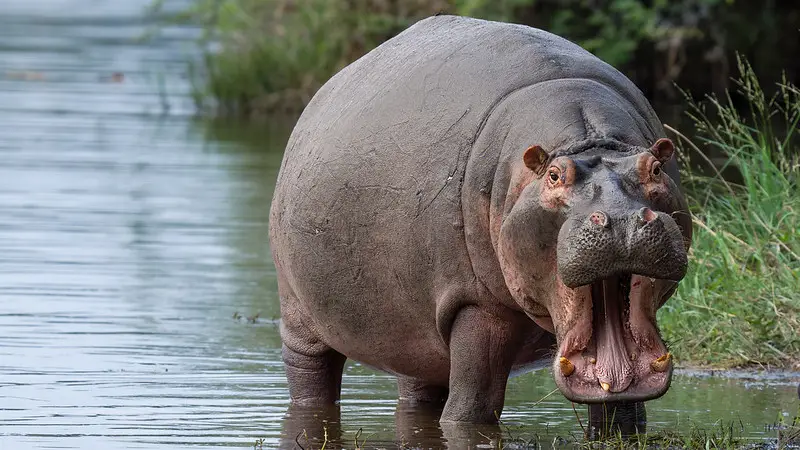
Despite their seemingly docile appearance, hippos are responsible for an estimated 500 human fatalities per year in Africa, making them one of the deadliest large mammals. These semi-aquatic behemoths can weigh up to 3,000 kg and run at speeds of up to 30 km/h on land, combining surprising agility with their massive size. Their territorial nature and unpredictable temperament contribute significantly to their deadly reputation. Hippos possess incredibly powerful jaws, capable of exerting a bite force of up to 1,821 PSI – strong enough to crush a crocodile or split a small boat in half.
According to the World Wildlife Fund (WWF), hippos are particularly dangerous because they are often underestimated by humans. Their aggression isn’t limited to perceived threats; they’ve been known to attack and kill other animals, including their own species. Interestingly, hippos can’t actually swim. Instead, they move through water by pushing off from the bottom, which is why they prefer shallow waters. Their skin secretes a reddish oily fluid often mistaken for “blood sweat,” which acts as a natural sunblock and antibiotic. This combination of size, strength, and aggressive behavior makes hippos far more deadly than sharks, which are responsible for an average of only 5-10 human deaths per year globally.
2. Elephants: The Gentle Giants with a Deadly Side
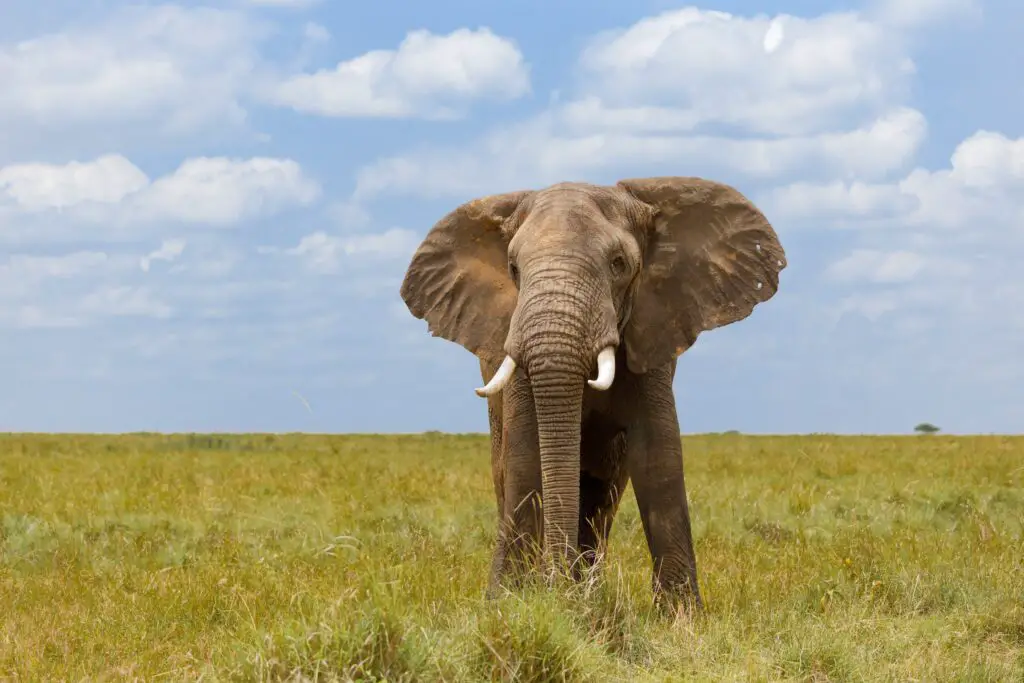
Elephants, despite their generally peaceful nature, are responsible for an estimated 500 human deaths each year. As human populations expand into elephant habitats, conflicts become more frequent. In India alone, elephants kill about 100 people annually, while crop damage affects around 500,000 families, according to the World Wildlife Fund. These intelligent creatures have complex social structures and emotions, making human-elephant conflicts particularly challenging to manage. Their massive size, with adults weighing up to 6,000 kg, means that even accidental encounters can be fatal.
What makes elephants particularly dangerous is their intelligence and memory. They possess remarkable cognitive abilities, including self-awareness, empathy, and problem-solving skills comparable to great apes. They have the largest brain of any land animal and can remember specific individuals and hold grudges for years. A study published in the Proceedings of the National Academy of Sciences found that elephants can distinguish between human languages, genders, and ages, allowing them to identify potential threats. This intelligence, combined with their size and strength, makes them formidable when they feel threatened or their habitat is encroached upon. Interestingly, some elephant populations have developed nocturnal behavior in response to human activity, highlighting their adaptability in the face of encroachment and further complicating human-elephant interactions.
3. Dogs: The Domesticated Danger

Man’s best friend has a dark side, causing approximately 25,000 to 35,000 human deaths annually, primarily through rabies transmission. According to WHO International, 99% of rabies cases in humans are due to dog bites, with most occurrences in Africa and Asia. In the United States alone, about 4.5 million dog bites are reported each year, resulting in 800,000 medical visits. While fatalities from dog attacks in developed countries are relatively rare, the global impact of rabid dogs makes them significantly more deadly than sharks.
Interestingly, smaller dog breeds often exhibit more aggressive behavior than larger ones, though larger dogs are capable of inflicting more severe injuries. A study published in Applied Animal Behaviour Science found that dachshunds, chihuahuas, and Jack Russell terriers were the most likely to bite. Conversely, Labrador retrievers, golden retrievers, and Siberian huskies were among the least aggressive. The domestication of dogs began around 15,000 years ago, making them one of humanity’s oldest animal companions. This long history of coexistence makes the persistent danger they pose particularly ironic. The key to mitigating this risk lies in responsible pet ownership, proper training, and global efforts to control rabies through vaccination programs.
4. Mosquitoes: The Tiny Terrors
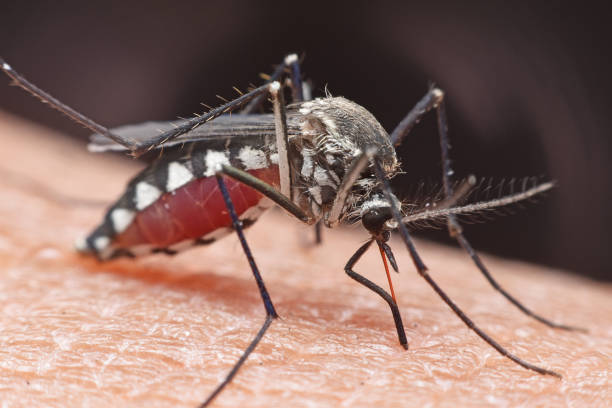
Mosquitoes are by far the deadliest animals on Earth, responsible for an estimated 725,000 human deaths annually. These minuscule menaces achieve this grim statistic by transmitting a variety of lethal diseases, including malaria, dengue fever, yellow fever, and Zika virus. According to the World Health Organization, malaria alone caused 619,000 deaths in 2021, with 95% of cases occurring in Africa. The Anopheles mosquito, the primary vector for malaria, is particularly notorious for its role in spreading this deadly disease.
What makes mosquitoes so dangerous is their ubiquity and their ability to breed rapidly in small amounts of standing water. Female mosquitoes, which are the ones that bite humans, can detect human breath and body heat from up to 50 meters away. They possess an array of sophisticated sensory organs that allow them to home in on their targets with remarkable precision. Mosquitoes have been shaping human history for millennia, with their ability to spread diseases influencing the outcomes of wars and the rise and fall of empires. For instance, mosquito-borne illnesses played a crucial role in the American Revolution, decimating British forces more effectively than combat. Despite their tiny size, mosquitoes remain one of humanity’s most persistent and deadly adversaries.
5. Snakes: The Slithering Assassins
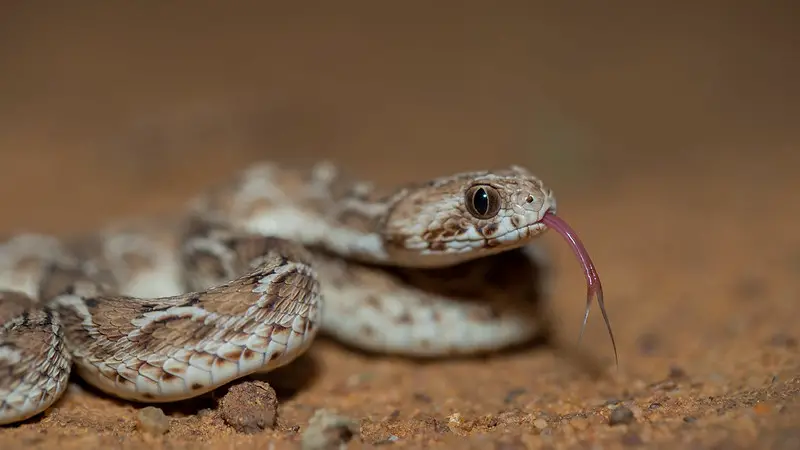
Snakes claim approximately 138,000 lives globally each year, making them one of the most lethal animals to humans. The saw-scaled viper, found in parts of Africa, the Middle East, and South Asia, is particularly deadly, responsible for more human deaths than any other snake due to its aggressive nature and prevalence in populated areas. Snakebites are classified as a neglected tropical disease by the World Health Organization, disproportionately affecting rural communities in developing countries where access to antivenom and medical care is limited.
The inland taipan, native to Australia, is considered the most venomous snake in the world. Its venom is potent enough to kill up to 100 adult humans with a single bite. However, due to its remote habitat and shy nature, it rarely encounters humans. In contrast, the black mamba of Africa, while less venomous, causes more fatalities due to its speed, aggression, and proximity to human settlements. Fascinatingly, some snakes, like the spitting cobras, can accurately project their venom up to 3 meters, aiming for the eyes of potential threats. This diverse array of venomous snakes, combined with their wide distribution and the challenges of treating snakebites in remote areas, makes them far more deadly to humans than sharks, which cause an average of only 5-10 fatalities per year worldwide.
6. Crocodiles: The Prehistoric Predators
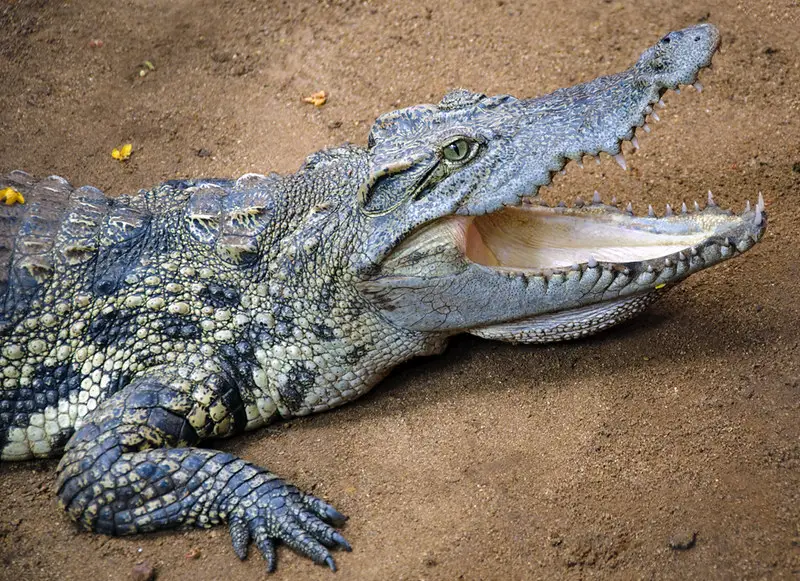
Crocodiles are responsible for approximately 1,000 human fatalities annually, making them one of the deadliest reptiles on the planet. The Nile crocodile and saltwater crocodile are the most dangerous to humans, with the latter being the largest living reptile, capable of reaching lengths over 6 meters and weights exceeding 1,000 kg. A study in the Journal of Wildlife Management found that saltwater crocodiles have the strongest bite force ever measured in a living animal, at 3,700 PSI – powerful enough to crush a small car.
What makes crocodiles particularly dangerous is their stealth and ambush hunting style. They can remain almost completely submerged, with only their eyes and nostrils above water, making them difficult to spot until it’s too late. Crocodiles have remained largely unchanged for over 200 million years, outliving the dinosaurs and surviving multiple mass extinction events. Their success is partly due to their remarkable adaptations, including a four-chambered heart (unique among reptiles), the ability to stay submerged for over an hour, and a “death roll” technique used to dismember prey. Surprisingly, crocodiles are more closely related to birds than to other reptiles like lizards or snakes. Some species, like the Australian freshwater crocodile, are known to engage in tool use, balancing sticks on their snouts to lure nesting birds. This combination of ancient adaptations and surprising intelligence makes crocodiles formidable predators that pose a significant threat to humans in many parts of the world.
7. Tsetse Flies: Africa’s Winged Scourge
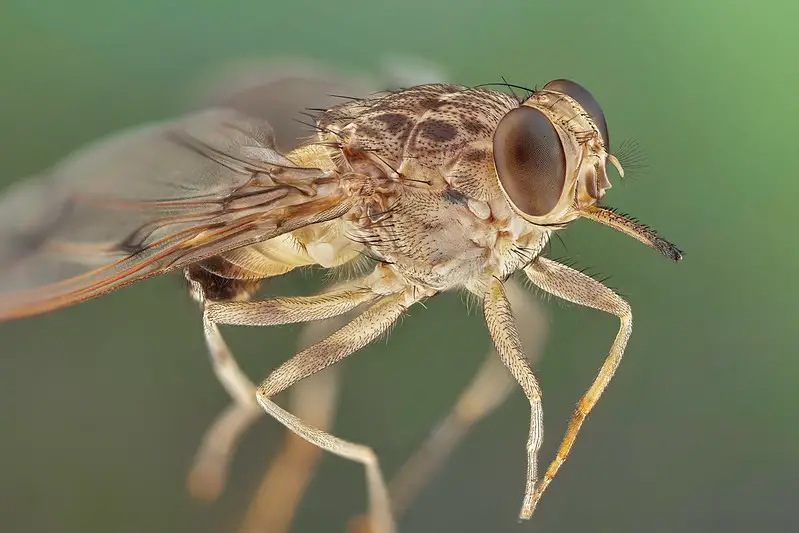
Tsetse flies are responsible for approximately 10,000 human deaths annually through the transmission of African trypanosomiasis, also known as sleeping sickness. Found exclusively in sub-Saharan Africa, tsetse flies have significantly impacted the region’s development by limiting agriculture and animal husbandry in “fly-belts” – areas where the insect thrives. According to the World Health Organization, sleeping sickness threatens millions of people in 36 countries in Africa.
Tsetse flies are unique among disease-carrying insects as both males and females feed on blood and can transmit the parasite. The disease progresses in two stages, with the second stage involving the parasite crossing the blood-brain barrier, leading to confusion, poor coordination, and disturbance of the sleep cycle – hence the name “sleeping sickness.” Without treatment, the disease is usually fatal. Interestingly, some wild animals have developed a tolerance to the parasite, acting as reservoirs for the disease without succumbing to it themselves. The economic impact of tsetse flies is substantial, with the Food and Agriculture Organization estimating annual losses in agricultural production due to trypanosomiasis at $4.5 billion.
8. Assassin Bugs: The Deadly Kiss
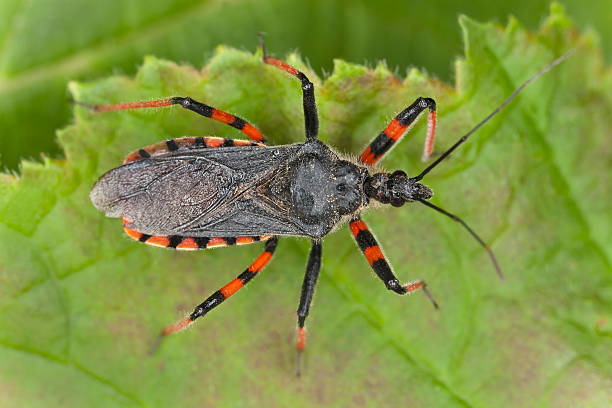
Assassin bugs, also known as kissing bugs, are responsible for approximately 12,000 human deaths annually through the transmission of Chagas disease. Found primarily in the Americas, these insects typically bite humans around the mouth while they sleep, hence their nickname. The parasite causing Chagas disease, Trypanosoma cruzi, is present in the bug’s feces, which can enter the body through the bite wound or mucous membranes. According to the Centers for Disease Control and Prevention, an estimated 8 million people in Mexico, Central America, and South America have Chagas disease, many of whom do not know they are infected.
Assassin bugs have a fascinating evolutionary history, with over 7,000 known species dating back about 100 million years. They are skilled predators, using their elongated mouthparts to inject a paralyzing saliva into their prey before sucking out the liquefied internal organs. Some species have even developed mimicry, disguising themselves as ants or other insects to avoid predation or ambush prey. A study in the Journal of Insect Science revealed that certain assassin bugs can adjust the composition of their saliva based on the type of prey, showcasing a remarkable level of adaptability. Despite their deadly potential, assassin bugs play important roles in many ecosystems as both predators and prey.
9. Freshwater Snails: The Unexpected Menace
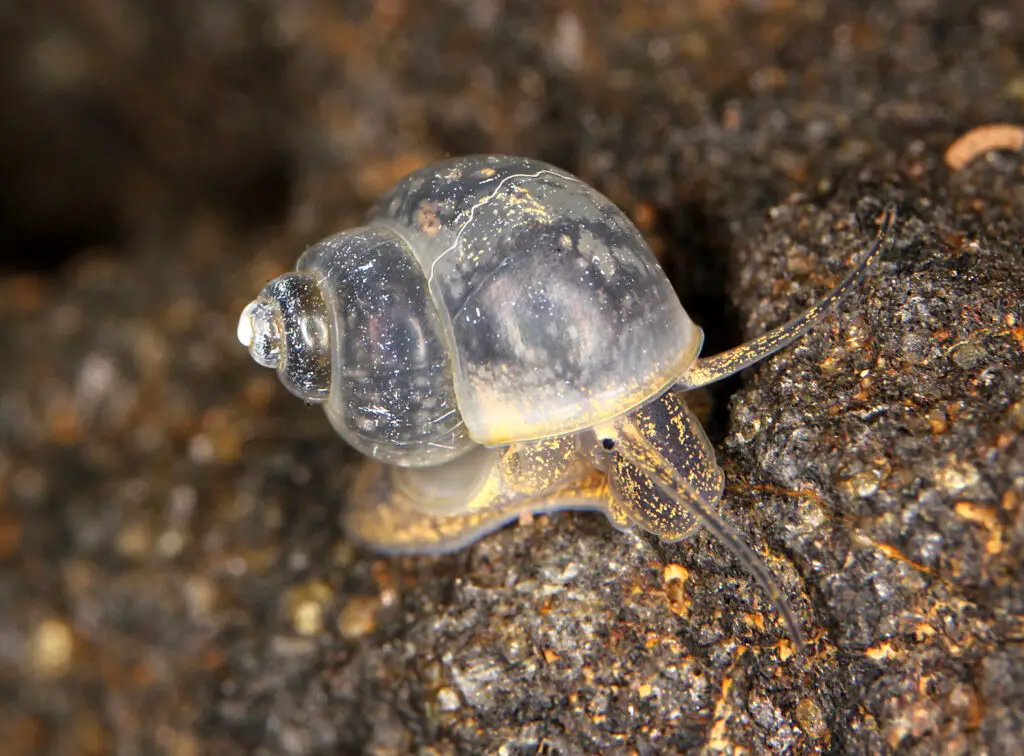
These unassuming mollusks are indirectly responsible for an estimated 200,000 human deaths annually, making them one of the deadliest animals on the planet. The culprit is not the snail itself, but the parasitic worms they harbor, particularly Schistosoma, which cause schistosomiasis (also known as bilharzia). According to the World Health Organization, this neglected tropical disease affects over 240 million people worldwide, primarily in Africa, Asia, and South America.
Freshwater snails serve as intermediate hosts for the Schistosoma parasites, which are released into water as larvae. These larvae can penetrate human skin, mature inside the body, and lay eggs, causing a range of symptoms from fever and fatigue to organ damage. Interestingly, some species of freshwater snails have developed resistance to the parasites, and researchers are studying these resistant snails to develop new strategies for controlling schistosomiasis. A study published in PLOS Neglected Tropical Diseases found that certain snail species produce molecules that can kill schistosome larvae, offering potential new avenues for disease control. The impact of these tiny creatures on human health underscores the complex relationships between different species in ecosystems and the often unexpected sources of significant health risks.
10. Box Jellyfish: The Invisible Killer
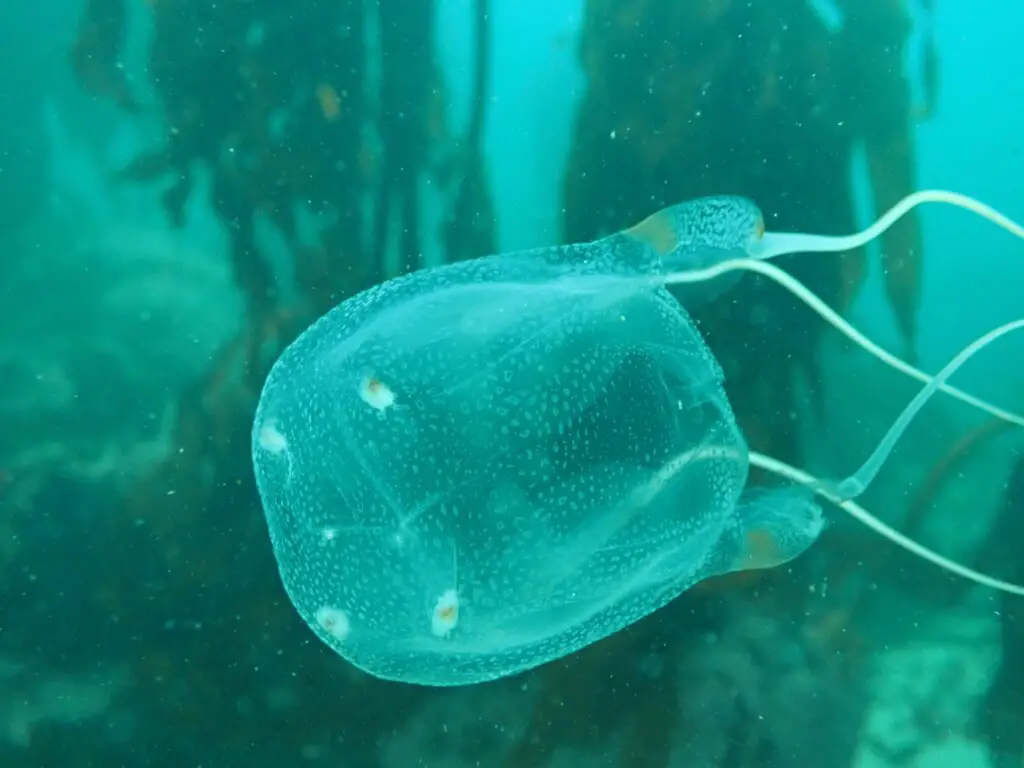
Box jellyfish are responsible for an estimated 20-40 human deaths annually, though the true number may be higher due to underreporting in remote areas. The box jellyfish’s venom is considered one of the most lethal substances in the animal kingdom, capable of killing a human in as little as two minutes. Found primarily in the coastal waters of the Indo-Pacific, these jellyfish have up to 60 tentacles, each up to 3 meters long, lined with millions of nematocysts (stinging cells). According to the Australian Institute of Marine Science, the venom of a single box jellyfish can kill up to 60 adults.
Despite their simple anatomy – lacking a brain, heart, or lungs – box jellyfish possess a surprising level of sophistication. They have 24 eyes of four different types, including some that can form images, allowing them to actively hunt their prey rather than simply drifting. A study published in Current Biology revealed that box jellyfish use visual cues to navigate towards light-colored objects, which may explain their tendency to swim towards light-colored swimwear. Remarkably, some species of box jellyfish display a form of sleep, entering a quiescent state at night, suggesting that sleep may have evolved much earlier than previously thought. The potency of their venom and their near invisibility in water make box jellyfish far more dangerous than sharks in the areas where they are found.
11. Lions: The Kings of the Jungle
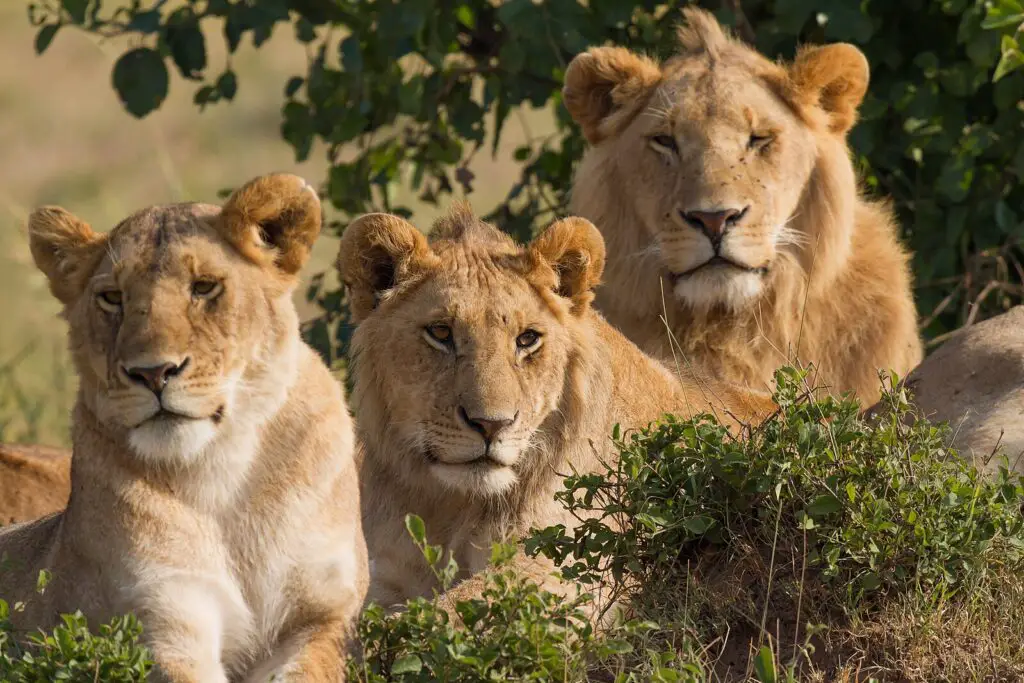
Although not as deadly as some smaller creatures, lions still claim about 200 human lives annually. Most attacks occur in rural areas of Africa where lions and humans coexist. A notable example is the Tsavo man-eaters, a pair of lions responsible for killing and eating an estimated 35 construction workers in Kenya in 1898. This incident, later turned into a book and film, highlights the potential danger these big cats can pose. According to the International Union for Conservation of Nature, lion populations have decreased by 43% over the past three generations, primarily due to habitat loss and human conflict.
Lions are the only truly social cats, living in prides of related females and their offspring, along with a coalition of males. This social structure allows them to take down prey much larger than themselves, including buffalo and even young elephants. Interestingly, male lions, despite their impressive manes, do only about 10% of the hunting, with females doing most of the work. A study published in Animal Behaviour found that lions adjust their hunting techniques based on the moon phase, being more successful on darker nights. Despite their fearsome reputation, lion populations are declining due to habitat loss and human conflict, with only about 20,000 remaining in the wild. Conservation efforts are crucial to ensure the survival of these iconic predators while also protecting human communities that live alongside them.
12. Scorpions: The Venomous Arachnids
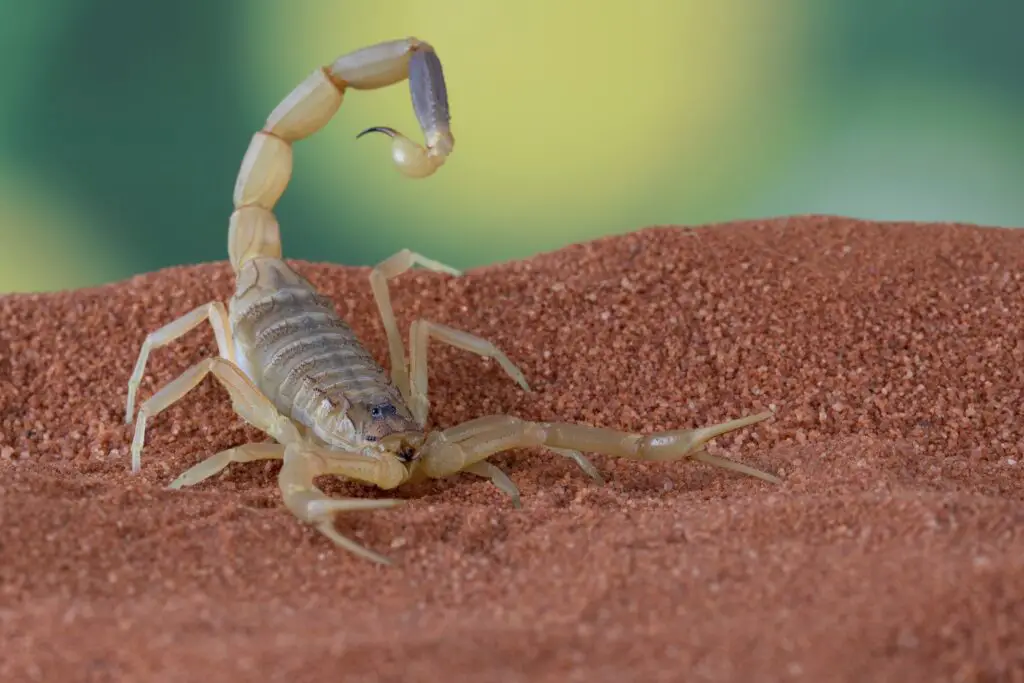
Scorpions are responsible for approximately 3,250 human deaths annually, making them one of the deadliest arachnids on the planet. The deathstalker scorpion, found in North Africa and the Middle East, is considered one of the most dangerous, with venom that can cause heart failure and pulmonary edema. According to the World Health Organization, scorpion stings cause significant morbidity and mortality in many parts of the world, particularly in children and the elderly.
Scorpions have existed for over 400 million years, predating dinosaurs by more than 200 million years. They possess a remarkable ability to fluorescence under ultraviolet light due to a substance in their exoskeleton, making them easier to spot at night. This trait has been used by researchers to study scorpion behavior and ecology. Surprisingly, scorpions are incredibly resilient creatures, capable of surviving extreme conditions. They can slow their metabolism to such a degree that some species can survive on as little as a single insect per year. Some scorpions can even survive being frozen solid, thawing out unharmed when temperatures rise. A study published in PLOS ONE found that scorpions can adjust their venom composition based on the type of threat they face, demonstrating a sophisticated defense mechanism.
13. Tapeworms: The Internal Invaders
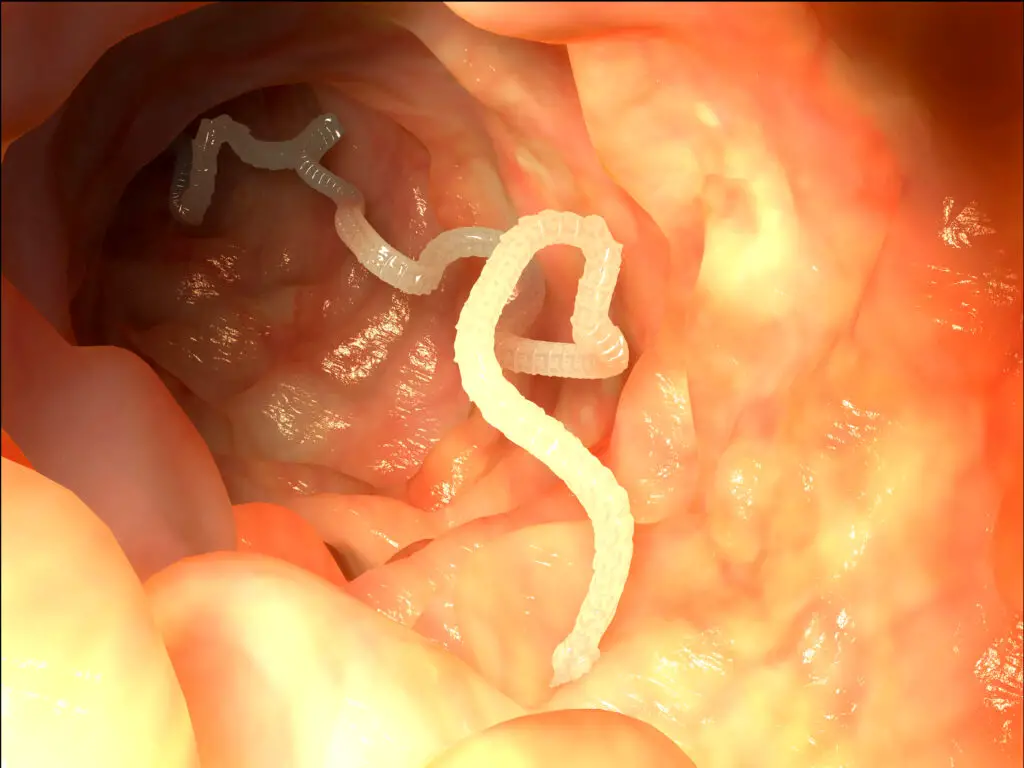
These parasitic flatworms are responsible for an estimated 2,500 human deaths annually, primarily through a condition called cysticercosis. This occurs when humans ingest tapeworm eggs, usually from contaminated food or water, and the larvae migrate to various tissues, including the brain. The pork tapeworm, Taenia solium, is the main culprit, with neurocysticercosis (cysts in the brain) being the most severe form of the disease. According to the Centers for Disease Control and Prevention, neurocysticercosis is a leading cause of adult-onset epilepsy worldwide.
Tapeworms have a fascinating lifecycle, often requiring multiple hosts to complete their development. Some species can grow to extraordinary lengths; the fish tapeworm, Diphyllobothrium latum, can reach up to 30 meters long, making it the longest parasite known to infect humans. Despite their harmful effects, tapeworms have attracted scientific interest for potential medical applications. A study published in Nature Communications found that molecules secreted by tapeworms can suppress inflammatory responses in their hosts, offering potential new treatments for autoimmune diseases. Additionally, researchers are exploring how tapeworms evade the immune system, which could lead to advancements in organ transplant procedures.
14. Deer: The Roadway Menace
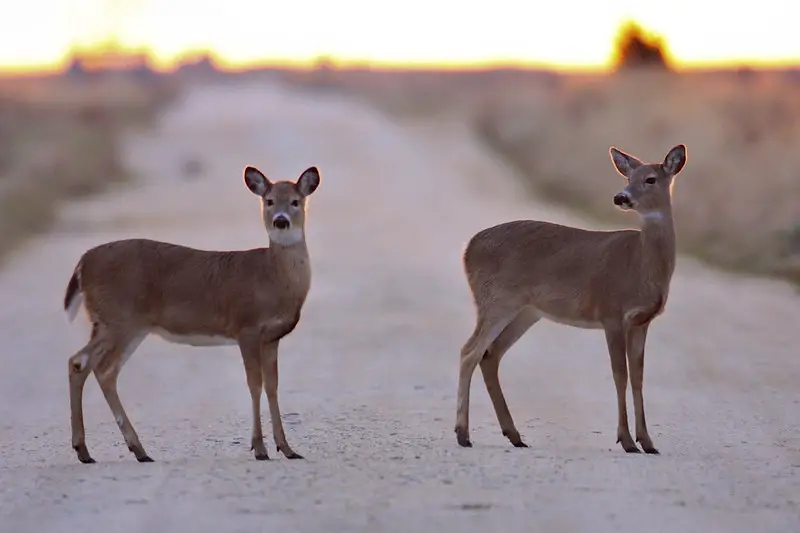
While not typically considered dangerous, deer are responsible for approximately 120 human deaths annually in the United States alone, primarily through vehicular collisions. The Insurance Institute for Highway Safety estimates that there are over 1.5 million deer-vehicle collisions each year in the U.S., causing over $1 billion in vehicle damage. These accidents peak during deer mating season in the fall, when the animals are more active and less cautious. According to the National Highway Traffic Safety Administration, there are about 1 million car accidents with deer each year that kill 200 Americans, cause more than 10,000 personal injuries, and result in $1 billion in vehicle damage.
Interestingly, deer have played a significant role in the spread of Lyme disease, serving as the primary host for the ticks that carry the bacteria. A study published in Proceedings of the National Academy of Sciences found that areas with high deer populations have up to 300 times more infected ticks than areas where deer have been excluded. On a positive note, deer have shown remarkable adaptability to urban environments. Research in the journal Urban Ecosystems revealed that urban deer have altered their behavior, becoming more nocturnal and developing a tolerance for human presence, highlighting the species’ ability to thrive alongside human development.
15. Horses: The Domesticated Danger

These majestic animals, long domesticated and beloved by humans, are responsible for approximately 20 human deaths annually in the United States. Most fatalities occur due to falls or kicks, with horseback riding being more dangerous than motorcycle riding on a per-hour basis. A study in the journal Injury Prevention found that horseback riding has a higher hospital admission rate per hour of activity than downhill ski racing.
Despite the risks, horses have played a crucial role in human history and continue to contribute to various fields. In medicine, pregnant mare’s urine is used to produce estrogen for hormone replacement therapy. Horses have also demonstrated remarkable cognitive abilities. Research published in Animal Cognition showed that horses can read human facial expressions and remember a person’s previous emotional state, affecting how they interact with that individual in the future. Interestingly, a study in the journal Biology Letters revealed that horses produce 17 distinct facial expressions, more than chimpanzees and dogs, highlighting their complex emotional lives and communication abilities.
16. Snakes: The Slithering Assassins

Snakes claim approximately 138,000 lives globally each year, making them one of the most lethal animals to humans. The saw-scaled viper, found in parts of Africa, the Middle East, and South Asia, is particularly deadly, responsible for more human deaths than any other snake due to its aggressive nature and prevalence in populated areas. Snakebites are classified as a neglected tropical disease by the World Health Organization, disproportionately affecting rural communities in developing countries where access to antivenom and medical care is limited.
The inland taipan, native to Australia, is considered the most venomous snake in the world. Its venom is potent enough to kill up to 100 adult humans with a single bite. However, due to its remote habitat and shy nature, it rarely encounters humans. In contrast, the black mamba of Africa, while less venomous, causes more fatalities due to its speed, aggression, and proximity to human settlements. Fascinatingly, some snakes, like the spitting cobras, can accurately project their venom up to 3 meters, aiming for the eyes of potential threats. This diverse array of venomous snakes, combined with their wide distribution and the challenges of treating snakebites in remote areas, makes them far more deadly to humans than sharks, which cause an average of only 5-10 fatalities per year worldwide.


